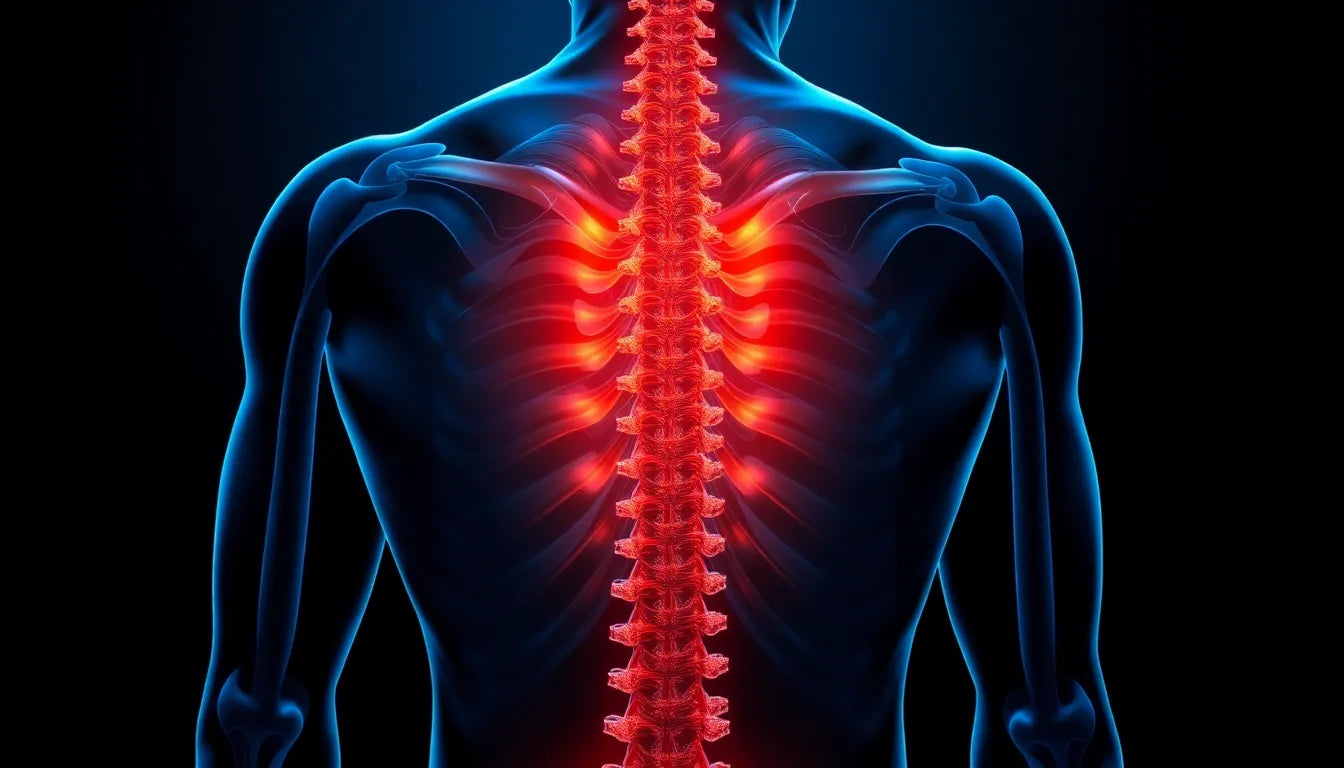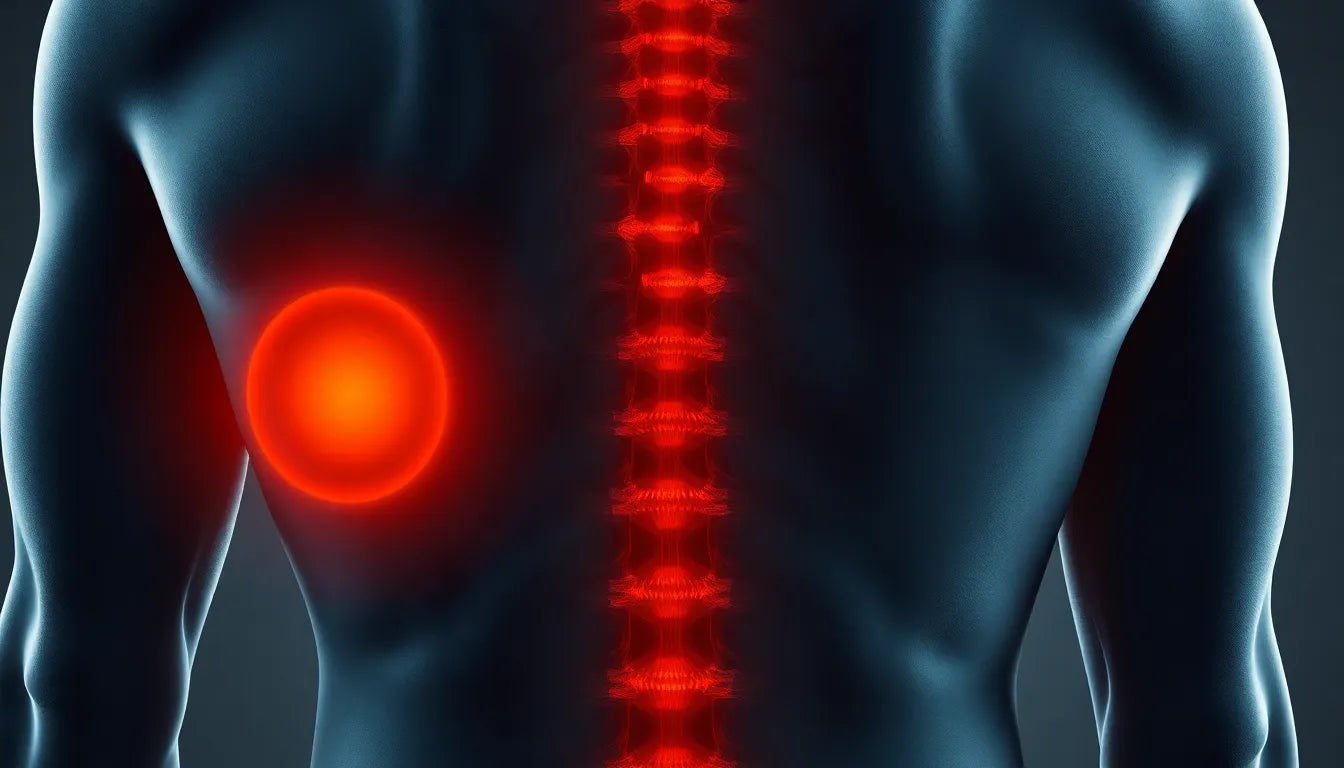Experiencing a herniated disc, particularly in the L3/L4 segment of the lumbar spine, can be a source of significant discomfort and disruption in daily life. Understanding the nature of this condition is crucial for managing its effects and exploring effective treatment options. A herniated disc occurs when the soft inner gel of a spinal disc pushes through a crack in its tougher exterior casing. This can lead to irritation of nearby nerves, resulting in pain, numbness, or weakness, particularly in the lower back and legs.
Significance of the L3/L4 region
The L3/L4 region of the spine plays a pivotal role in supporting the lower back and facilitating movement. This segment is located in the lumbar spine, which is responsible for bearing much of the body's weight and allowing for a wide range of motion. Due to its critical function, the L3/L4 disc is particularly susceptible to wear and tear, making it a common site for herniation. When this disc is compromised, it can lead to severe pain and mobility issues, affecting one's ability to perform everyday activities.
Prevalence and impact of L3/L4 herniated discs
L3/L4 herniated discs are not uncommon, especially among individuals who engage in activities that place excessive strain on the lower back. The condition can manifest in various forms, from mild discomfort to debilitating pain that significantly hampers mobility. The impact on daily life can be profound, as sufferers often experience challenges in sitting, standing, or walking for extended periods. This can lead to a decrease in quality of life, affecting both personal and professional spheres.
The search for relief
Finding relief from L3/L4 herniated disc pain can be a daunting task for many. The journey often involves navigating a complex landscape of treatments and therapies, each with its own set of challenges and potential outcomes. Common difficulties include managing persistent pain, understanding the root causes, and selecting the most appropriate treatment plan. For those affected, the search for effective relief is not just about alleviating pain but also about regaining control over their lives.
This blog post aims to provide comprehensive insights into the causes, symptoms, and treatment options for L3/L4 herniated discs. By equipping readers with valuable information, we hope to empower individuals to make informed decisions and take proactive steps towards finding relief and improving their quality of life.
Causes and symptoms of L3/L4 herniated disc
The development of a herniated disc at the L3/L4 level can be attributed to several factors. One of the most common causes is disc degeneration due to aging. As we age, the spinal discs naturally lose some of their water content, becoming less flexible and more prone to tearing or rupturing. This degeneration can lead to the protrusion of the disc material, causing a herniation.
Another significant cause is physical trauma or injury. Sudden impacts, falls, or accidents can exert excessive force on the spine, leading to a herniated disc. Similarly, poor posture and repetitive strain from activities such as heavy lifting or prolonged sitting can increase the risk of disc herniation. These actions place continuous pressure on the lumbar region, particularly at the L3/L4 level, making it vulnerable to injury.
Symptoms of an L3/L4 herniated disc can vary but typically include persistent lower back pain. This pain may radiate to the buttocks, thighs, or even down the legs, a condition known as sciatica. In addition to pain, individuals may experience neurological deficits such as numbness, tingling, or weakness in the legs. These symptoms occur because the herniated disc material can press on the nearby nerves, affecting their function.
Treatment options for L3/L4 herniated disc
When it comes to treating an L3/L4 herniated disc, there are both nonsurgical and surgical options available, depending on the severity of the condition and the patient's overall health.
Nonsurgical treatments
Nonsurgical treatments are often the first line of defense. Medication can play a crucial role in managing pain and inflammation. Over-the-counter pain relievers, anti-inflammatories, and muscle relaxants can help alleviate discomfort and improve mobility.
Physical therapy is another vital component of nonsurgical treatment. A physical therapist can design a tailored exercise program to strengthen the back muscles, improve flexibility, and enhance posture. These exercises can help reduce pressure on the affected disc and promote healing.
Chiropractic manipulation is also a popular nonsurgical option. Techniques such as high-velocity, low-amplitude spinal manipulation can help realign the spine and relieve pressure on the nerves. Additionally, injections, such as epidural steroid injections, can be administered to reduce inflammation and provide temporary pain relief.
Surgical treatments
In cases where nonsurgical treatments are ineffective, surgical intervention may be necessary. A microdiscectomy is a minimally invasive procedure that involves removing the portion of the disc that is pressing on the nerve. This surgery is often successful in relieving pain and restoring function.
Other surgical options include laminectomy and foraminotomy, which aim to relieve pressure on the nerve roots by removing part of the bone or tissue. In more severe cases, a spinal fusion of the L3/L4 segment may be recommended to stabilize the spine by joining two or more vertebrae. This procedure can help prevent further degeneration and alleviate pain.
Case studies and success stories
There are numerous success stories of individuals who have found relief from L3/L4 herniated disc pain through conservative management. For instance, a case study from the National Center for Biotechnology Information highlights a patient who successfully managed their condition with high-velocity, low-amplitude spinal manipulation and adjunctive therapies. This approach not only alleviated pain but also improved the patient's overall quality of life.
In some instances, herniated discs have been known to heal naturally over time through a process called spontaneous resorption. This occurs when the body gradually reabsorbs the herniated disc material, reducing pressure on the nerves and alleviating symptoms. While not guaranteed, this natural healing process offers hope for those seeking non-invasive solutions.
Advancements in non-invasive treatments for L3/L4 herniated disc
Recent years have seen significant advancements in non-invasive treatments for L3/L4 herniated disc pain, providing new hope for those seeking relief without surgery. Holistic and alternative therapies are gaining popularity as complementary approaches to traditional medical treatments. Ayurvedic therapy, for example, emphasizes the use of herbal remedies, dietary changes, and lifestyle modifications to manage pain and promote healing. This ancient practice offers a natural way to address the underlying causes of disc herniation and improve overall well-being.
Other complementary therapies, such as acupuncture and massage, have also shown promise in alleviating symptoms associated with herniated discs. Acupuncture involves the insertion of fine needles into specific points on the body to stimulate healing and reduce pain. Massage therapy, on the other hand, can help relieve muscle tension, improve circulation, and enhance flexibility, all of which contribute to reducing pressure on the affected disc.
Technological innovations in non-invasive procedures are also paving the way for more effective treatment options. Techniques such as spinal decompression therapy use specialized equipment to gently stretch the spine, promoting the retraction of herniated disc material and relieving pressure on the nerves. These advancements offer patients a range of options to explore before considering surgical interventions.
Conclusion: Empowering patients and offering hope for recovery
Empowering patients with knowledge about their condition and treatment options is crucial in the journey to recovery from L3/L4 herniated disc pain. By understanding the various approaches available, individuals can make informed decisions and tailor their treatment plans to suit their unique needs. The advancements in both traditional and alternative therapies offer a comprehensive toolkit for managing symptoms and improving quality of life.
Ultimately, the path to relief from herniated disc pain is a personal one, requiring patience, persistence, and a willingness to explore different avenues. With the right combination of treatments and a proactive approach, individuals can find hope and healing, regaining control over their lives and achieving lasting relief.
Frequently Asked Questions
What are the symptoms of an L3/L4 herniated disc?
Symptoms include lower back pain, sciatica, numbness, and leg weakness. These symptoms occur due to the pressure exerted by the herniated disc on the surrounding nerves.
How is an L3/L4 herniated disc diagnosed?
An L3/L4 herniated disc is typically diagnosed through a combination of physical examination and imaging tests such as MRI or CT scans, which provide detailed images of the spine and help identify the location and severity of the herniation.
Can a herniated disc heal on its own?
In some cases, herniated discs can heal naturally over time with rest and conservative treatment. This process, known as spontaneous resorption, involves the body gradually reabsorbing the herniated material, reducing pressure on the nerves.
What are the risks of surgical treatment for herniated discs?
Surgical treatment for herniated discs carries risks such as infection, nerve damage, and the potential need for further surgery. It is important to discuss these risks with a healthcare provider when considering surgical options.
Are there lifestyle changes that can help manage herniated disc pain?
Yes, maintaining a healthy weight, practicing good posture, and engaging in regular exercise can help manage symptoms. These lifestyle changes can reduce strain on the spine and promote overall spinal health.























